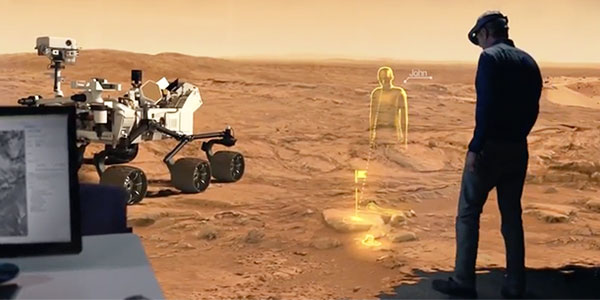Microsoft on Wednesday announced Windows Holographic, a feature in Windows 10 that will let users create their own holograms and print them out on 3D printers.
Every Windows 10 device has holographic APIs enabled, Microsoft’s Alex Kipman said. Windows 10 holograms are Windows Universal Apps.
Users need the Microsoft HoloLens headset, which Kipman described as “the first fully untethered computer.”
It has advanced sensors to capture information, high-definition holographic lenses, and spatial sound so users can hear holograms behind them.
Holographic Processing Unit
The HoloLens has a built-in high-end CPU and a high-end graphics processing unit, but “to handle all the processing required, we had to go beyond the traditional CPU and GPU so we invented a third processor — a holographic processing unit,” Kipman said.
The HPU understands users’ gestures and voices “while processing terabytes of information from all its sensors in real time,” he noted.
HoloLens “enables holographic computing immediately with … no external cameras, no wires, no phones required, and no connection to a PC needed,” Kipman remarked.
Microsoft also created Holo Studio, which lets users create their own holograms, print them out on 3D printers, and share them with others within minutes.
The headset was reportedly developed under the codename “Project Baraboo.”
Kipman apparently has been working on it for about five years.
He invited developers from “Oculus, Magic Leap, [Google] Glass and everyone else” to create holographic apps for Windows 10.
The HoloLens eclipsed everything else at Microsoft’s Windows 10 event, said Rob Enderle, principal analyst at the Enderle Group.
HoloLens “is a brand new computer type and interface,” he told TechNewsWorld. “Some might call this the next big step towards the singularity.”
The HoloLens “embodies a new wearable computer type that is controlled via voice and gestures and create the impression that reality has been altered around us,” Enderle continued, adding that it “has a brand new processor designed specifically for holographic work, and it is fully contained so it is also mobile. I don’t think even the Microsoft folks are fully aware of what they have potentially created here.”
The HoloLens was developed in conjunction with JPL labs, Enderle said.
“This is truly a game changer,” he enthused. “When you can alter what people see in real-time, and allow them to interact with and render in 3D their creations, you fundamentally change the way we compute.”
The version demoed by Microsoft is “version 1,” Enderle said. “If you project ahead 10 years, this could actually replace how we currently use computers.”























































